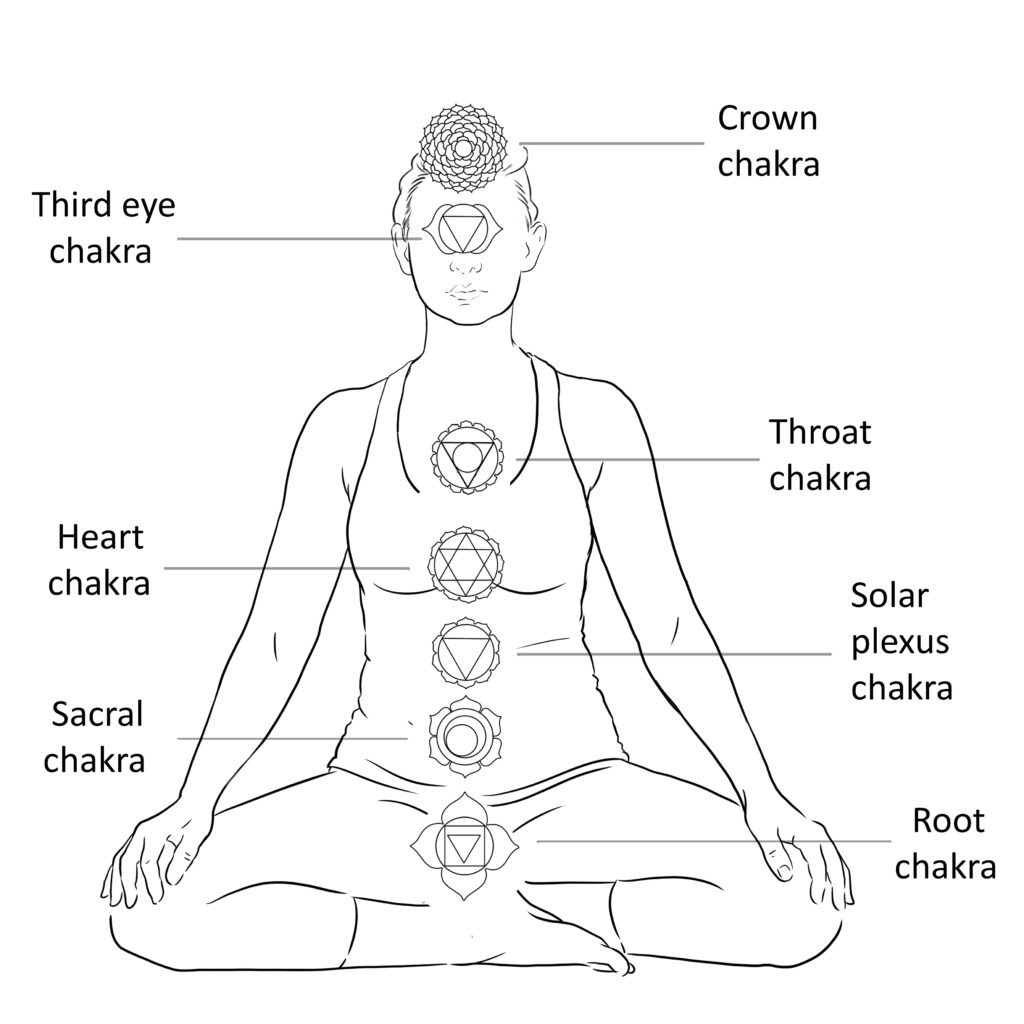Exploring muladhara chakra as an interoceptive pathway back to your gut
Written by Charlotte Watts and Leonie Taylor, co-authors of Yoga Therapy for Digestive Health and Yoga and Somatics for Immune and Respiratory Health.
So often in modern society, we are habitually ‘up in our heads’. To do lists, competing stressors, perpetual analysis… All of which can lead to dissociation from the body on a personal level, but also a disconnect from our environment, those around us. We have become more like machines in our conditioned drive for productivity. Perhaps this is why so many of us are drawn to modalities such as yoga and Somatics, which bring us back into connection, which literally earth us.
An interesting lens through which we can access a sense of grounding is the chakras. Perhaps no other spiritual map has taken up human imagination as much, allowing us a framework through which to explore the polarities of light and shadow, spirit and matter, and embodiment as part of a healthy psyche. For digestive health, the polarities of nourishment and elimination are a potent expression of this animism. The chakra system has morphed from its eastern roots – much through the work of 20th-century psychiatrist and psychoanalyst Carl Jung, as well as the Theosophy and ‘New Age’ movements of the 1960s-80s – as a way of mapping how we feel and respond throughout life. As a universally acknowledged topography for mind-body symbolism, this can be a useful route into modern body psychology, psychosomatic and trauma work.
As our digestive tract is such a repository for the unconscious conditionings we can push down and continue to act from, self-enquiry through mind-body work provides some sense of the journey. Western developmental ideas can work so well in conjunction with the lineage of yoga.
Back to our root
The first, or ‘root’ chakra, muladhara, is associated with the earth element (tattva), which sits on the pelvic floor, base of the spine and first three vertebrae. It is the platform from which the three main nadis (energy conduits of the subtle body: sushumna, ida and pinghala) emerge and the foundation of the energy body, as well as the base of physicality: for sitting, standing and walking. Related to the pudendal nerve that runs from the sex organs to the sacrum, here is the basis of Kundalini rising and the harmonising of shiva shakti, male and female energies.
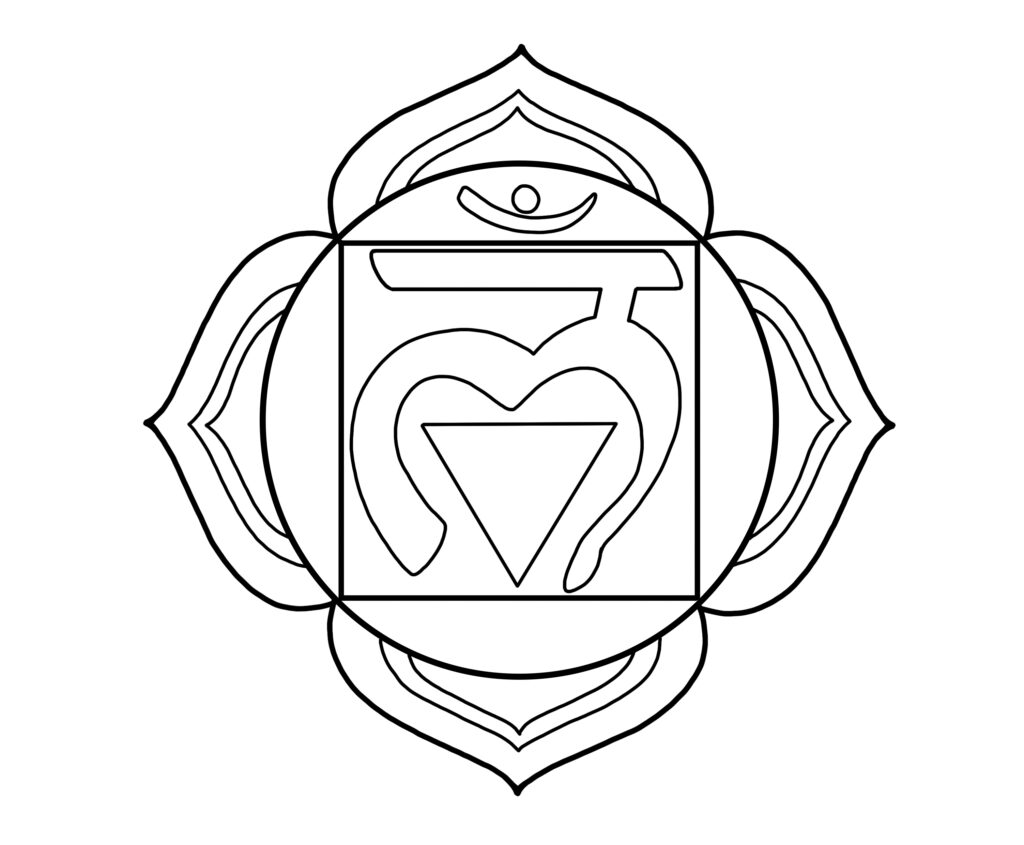
Carl Jung’s view on the chakras related them to our psyche rather than physicality. He saw the chakra system (in Kundalini yoga) as one of the emerging states of impersonality, developing separation of the non-ego from the conscious ego, where the ego is the part of the self that is aware of only conscious, personal experiences. Interestingly, Jung believed that Westerners tend to travel down to awaken the unconscious from below (as being so head-based, we need to awaken belly connection), whilst Easterners move upwards from the root to attain higher consciousness. Muladhara is, therefore, traditionally baser and more animal) less conscious, but Jung saw it as relating to the daily routine world, where we act in response to our instincts, impulses and unconscious.
This is Chakra Theory by and for Westerners, recognising the deep need for coherence within a reductionist culture that separates head, heart, and gut. It plugs straight into developmental psychology, where there is an acceptance that early childhood events shape our conscious and unconscious.
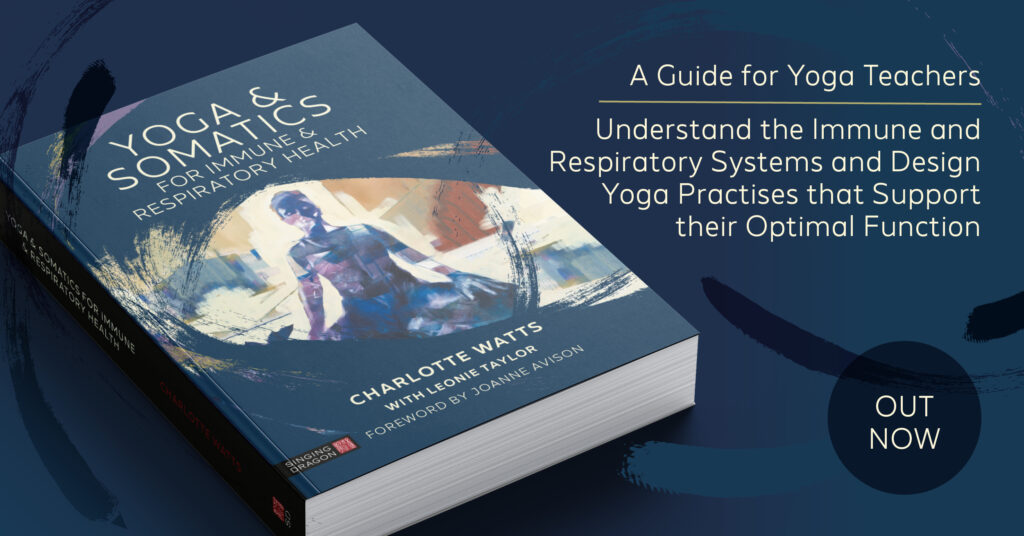
The psychology of Muladhara
The root chakra is associated with the following aspects of physiology and psychology:
- Body: pelvis, sex organs, large intestine, blood, skeletal structure, teeth
- Qualities: grounded, loyal, connected to family, steady – stability
- Developmental stage: womb to 12 months
- Lives in: first 7 years of life
- State: ‘I am here’
- Rights: to have
- Psychological function: survival and self-preservation
- Identity: physical identity
- Challenge: fear
Muladhara provides the stability and safety to transform in any way upwards and starts in utero. Our rights to be here and exist can be disturbed when the first chakra is unable to develop, when a pregnant woman is stressed, anxious or ambivalent – the baby receives signals that it will need self-protection to survive. A safe, secure, happy mother relays messages to her unborn child that their needs will be met, and its root can develop.
Many suffering from stress, trauma and related symptoms like IBS feel agitated, dissociated, and disconnected from the physical body. All decisions have a basis of approach/withdraw that comes from visceral trust/mistrust that we respond to from gut feelings which start in the womb.
Within the modern chakra model, issues with food can arise from insecure root development. Relationships with nourishment in the first year of life stem from different experiences:
- If food is scarce, patterns of ‘not enough’ are set.
- Where food is used as comfort, cravings to dull or numb difficult sensations can result.
- If food is reward, a sense of ‘I deserve…’ can supersede natural appetite cues.
Eating disorders are the realm of the first chakra: too little energy from the ground up and we can deny ourselves what we need, from self-care to success. Withholding nourishment can be part of not wanting to or feeling the right to exist. Too much energy in muladhara and we can feel earthbound, dull.
In utero and the first year of life, where we develop basic body regulations and start to evolve upwards from the ground, from unconscious to conscious, healthy attachment can promote a comfortable relationship to self as a container, from which we move out with ease. As we develop awareness of boundaries and edges – where we and the world around us are – we receive feedback from our caregivers about whether this exploration is encouraged or denied, setting our boundary responses as healthy and embodied or fearful and mistrustful. This is felt via our external boundary – the skin – but also internally in the gut wall. Healthy differentiation and boundaries come when we can relax within the external world.
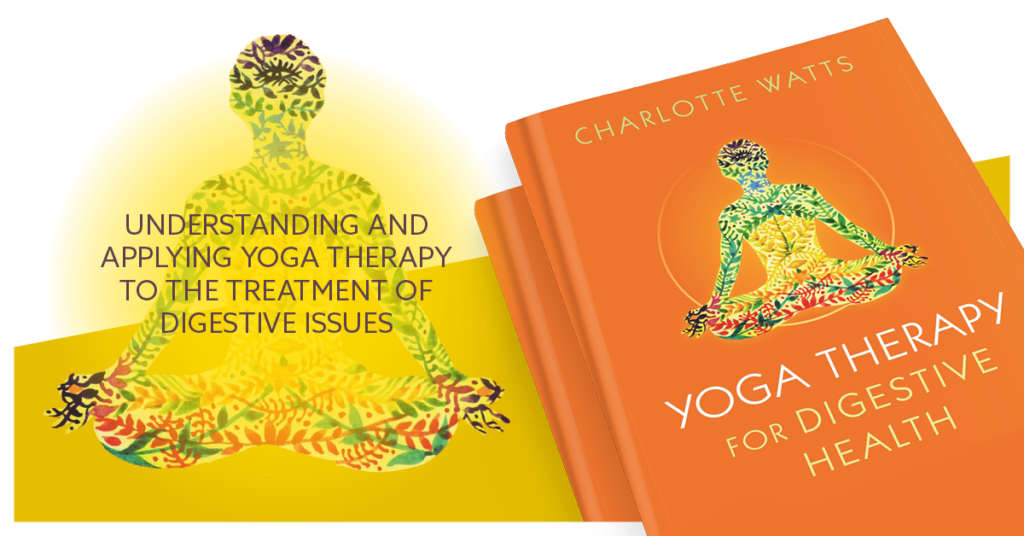
Grounding for belly safety
Coming to the ground in our movement practice, we start at the place of the first chakra. This could be seated to connect the root of the spine at our seat or sanding in tadasana (mountain pose) from the root of the feet. With so many body issues related to living ‘head-up’, I often start yoga sequences lying on the floor, as this offers clear connection with the ground.
Here the body is fully held, with no effort required. This can be a great precursor to stronger standing practices, where intelligent preparation can lead to space up through the pelvis and lower back that can be felt as a lightness lifting up from the ground.
Constructive Rest Position variations
CRP is a reset for the spine and the psoas and a space to foster internal awareness of unconscious, habitual instincts. 15 minutes of relaxed attention in the pose facilitates the full benefits.
“Exploring our instinctive fear responses both while in CRP and other positions helps resolve the emotional holding while releasing the psoas.” – Liz Koch, 2011
- Take your feet wider, toes turned in and knees together when no props available.
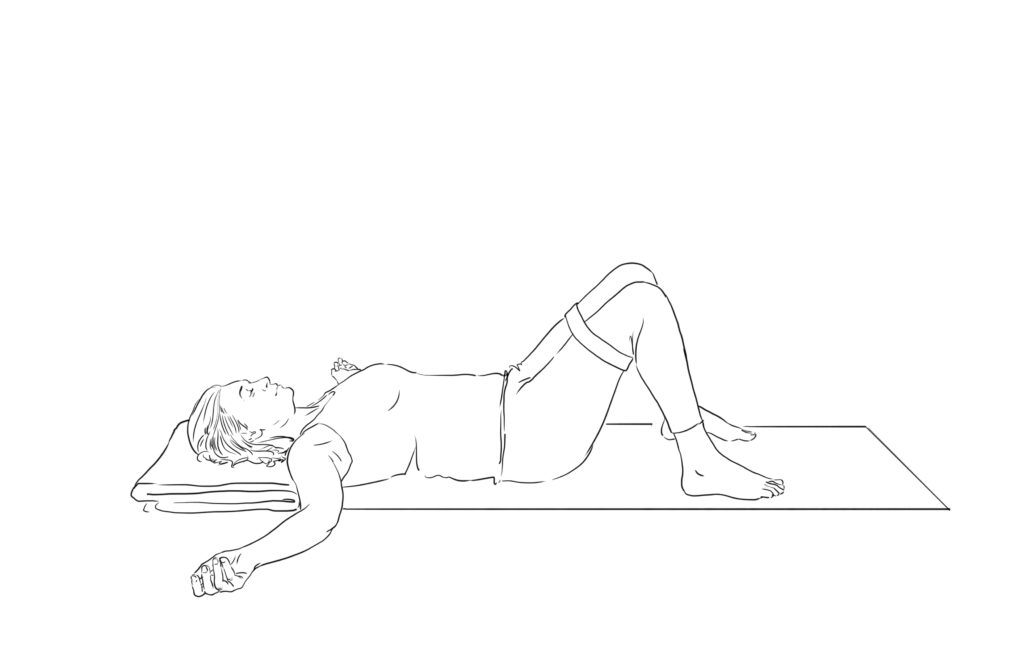
2. Place the balls of your feet on a cushion or bolster to soften a tight lower back and feel into the base of your feet and root chakra.
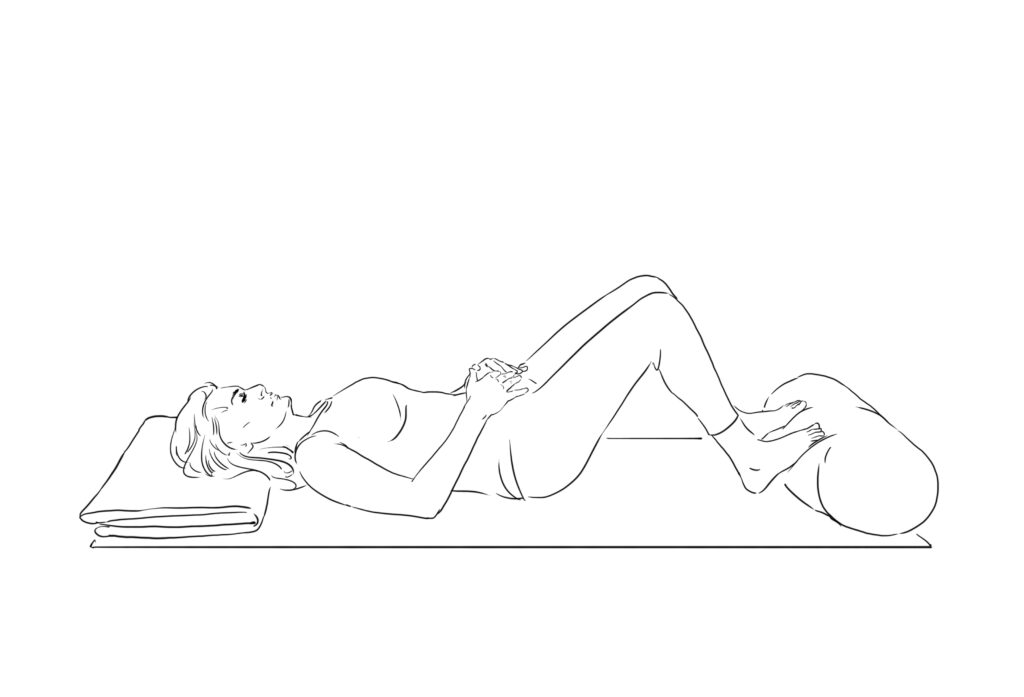
3. Use a belt around the top of the thighs for extra ‘holding’.
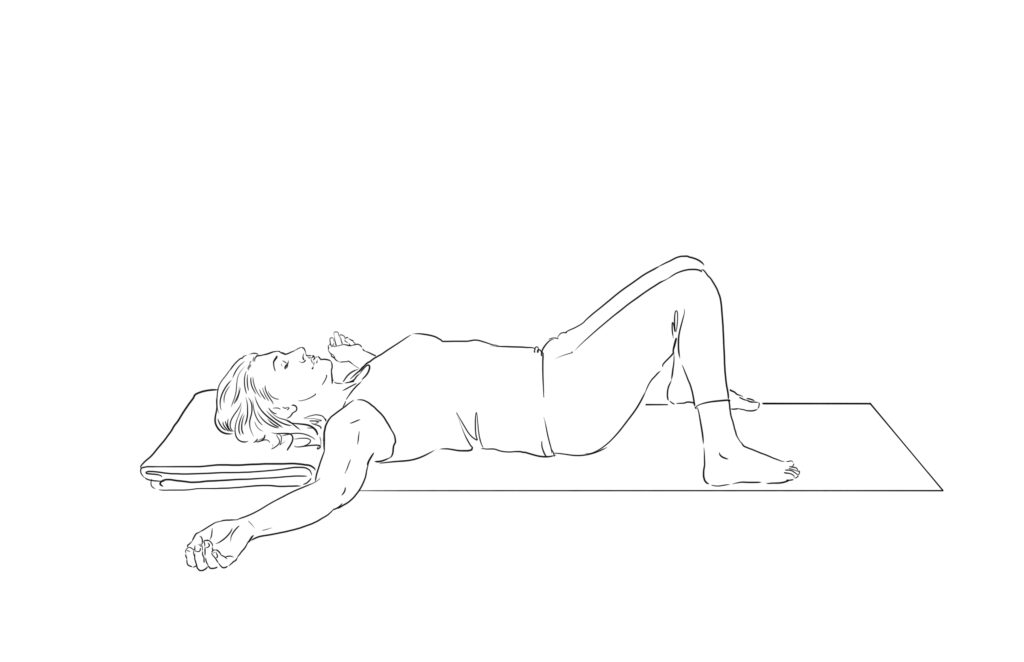
4. Put your shins on a chair for a deeper sense of grounding in muladhara.
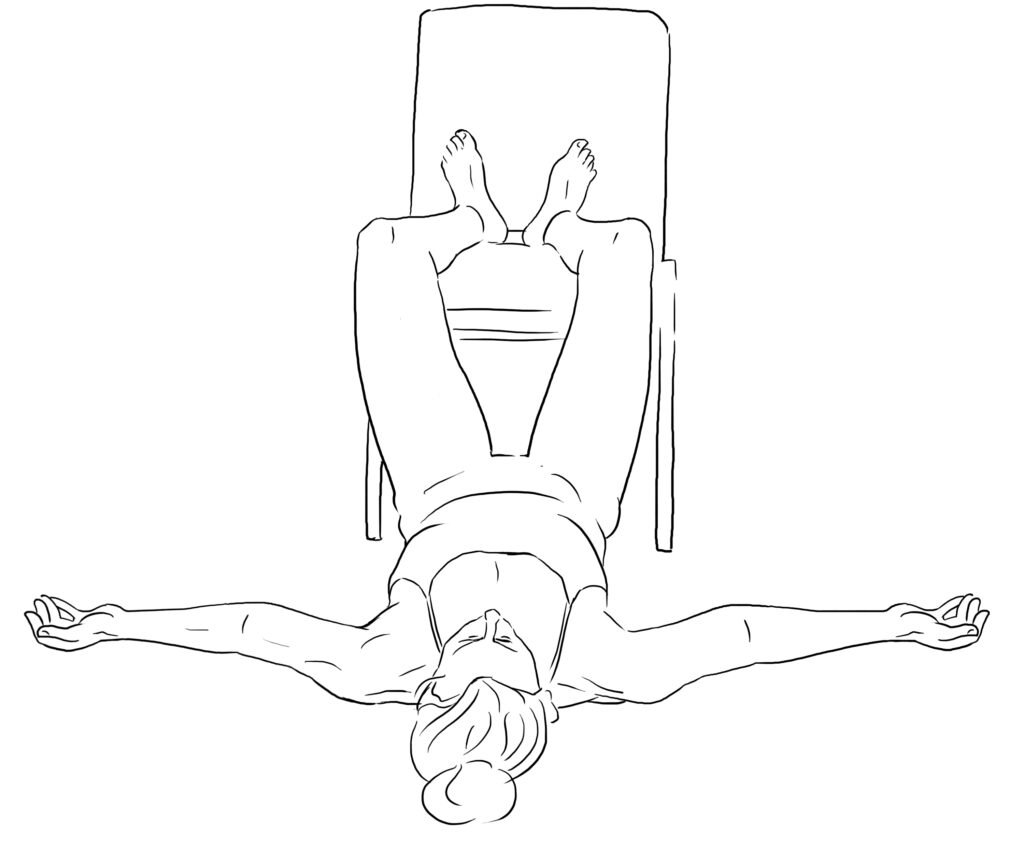
For a deeper dive into the intersection of yoga and Somatics with whole health, see Yoga Therapy for Digestive Health and Yoga & Somatics for Immune & Respiratory Health.
